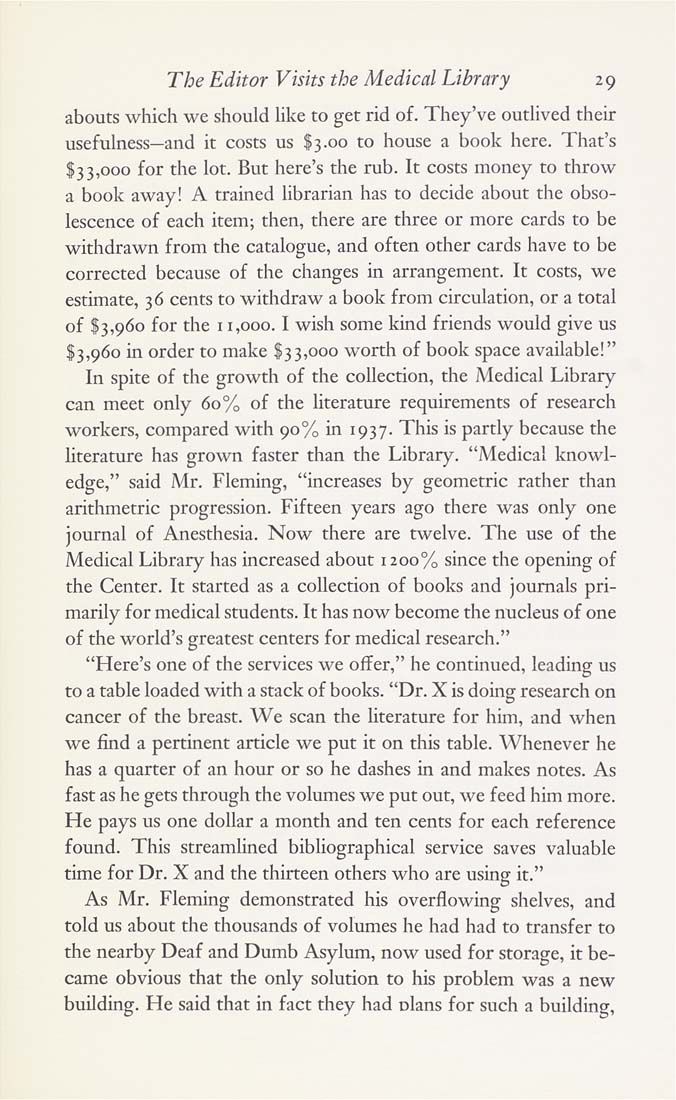Columbia Library columns (v.2(1952Nov-1953May))
(New York : Friends of the Columbia Libraries. )
|
||
|
|
|
|
| v.2,no.1(1952:Nov): Page 29 |

The Editor Visits the Medical Library 29 abouts which we should hke to get rid of. They've outlived their usefulness—and it costs us $3.00 to house a book here. That's $33,000 for the lot. But here's the rub. It costs money to throw a book away! A trained librarian has to decide about the obso¬ lescence of each item; then, there are three or more cards to be withdrawn from the catalogue, and often other cards have to be corrected because of the changes in arrangement. It costs, we estimate, 36 cents to withdraw a book from circulation, or a total of $3,960 for the 11,000.1 wish some kind friends would give us $3,960 in order to make $33,000 worth of book space available!" In spite of the growth of the collection, the Medical Library can meet only 60% of the literature requirements of research workers, compared with 90% in 1937. This is partly because the literature has grown faster than the Library. "Medical knowl¬ edge," said Mr. Fleming, "increases by geometric rather than arithmetric progression. Fifteen years ago there was only one journal of Anesthesia. Now there are twelve. The use of the Medical Library has increased about 1200% since the opening of the Center. It started as a collection of books and journals pri¬ marily for medical students. It has now become the nucleus of one of the world's greatest centers for medical research." "Here's one of the services we offer," he continued, leading us to a table loaded with a stack of books. "Dr. X is doing research on cancer of the breast. We scan the literature for him, and when we find a pertinent article we put it on this table. Whenever he has a quarter of an hour or so he dashes in and makes notes. As fast as he gets through the volumes we put out, we feed him more. He pays us one dollar a month and ten cents for each reference found. This streamlined bibliographical service saves valuable time for Dr. X and the thirteen others who are using it." As Mr. Fleming demonstrated his overflowing shelves, and told us about the thousands of volumes he had had to transfer to the nearby Deaf and Dumb Asylum, now used for storage, it be¬ came obvious that the only solution to his problem was a new building. He said that in fact they had clans for such a building, |
| v.2,no.1(1952:Nov): Page 29 |







